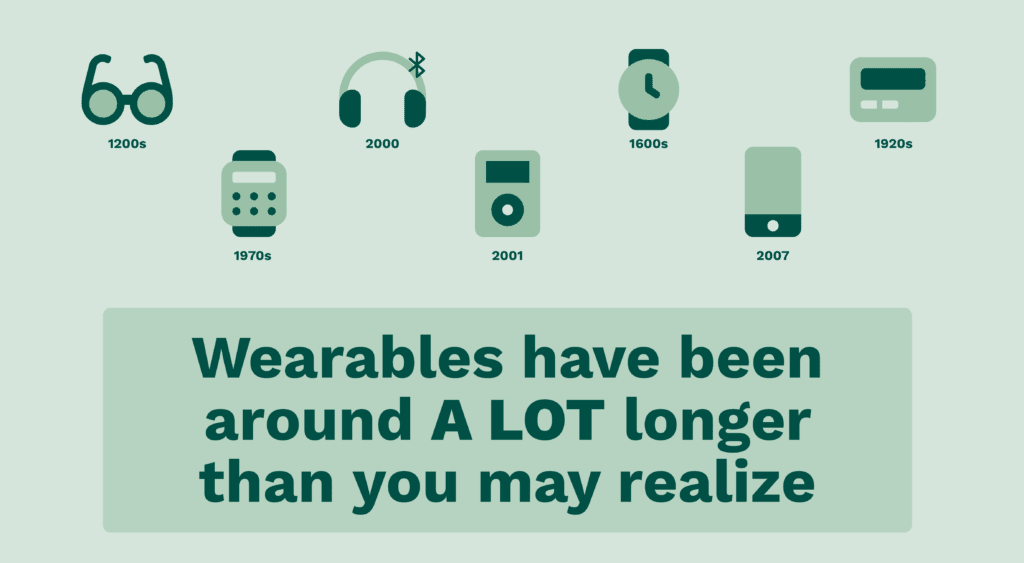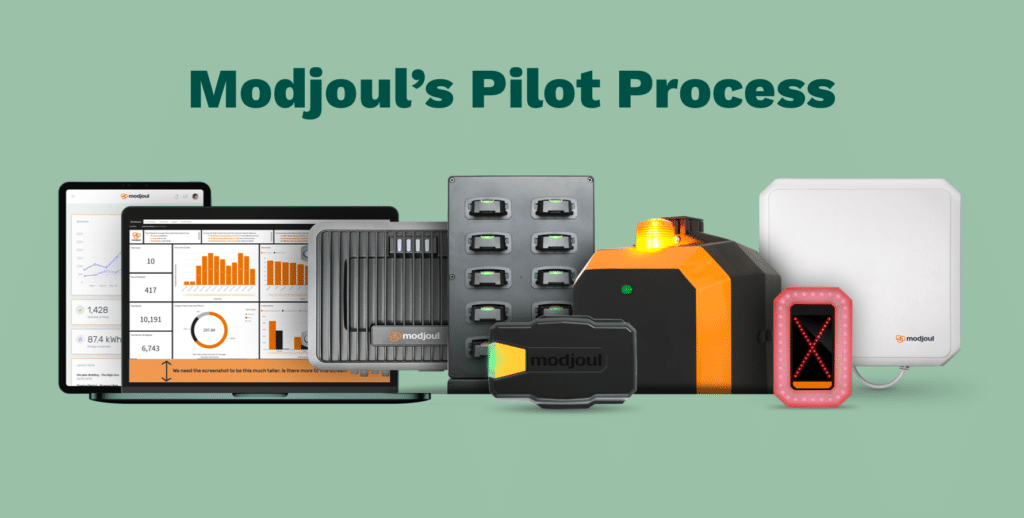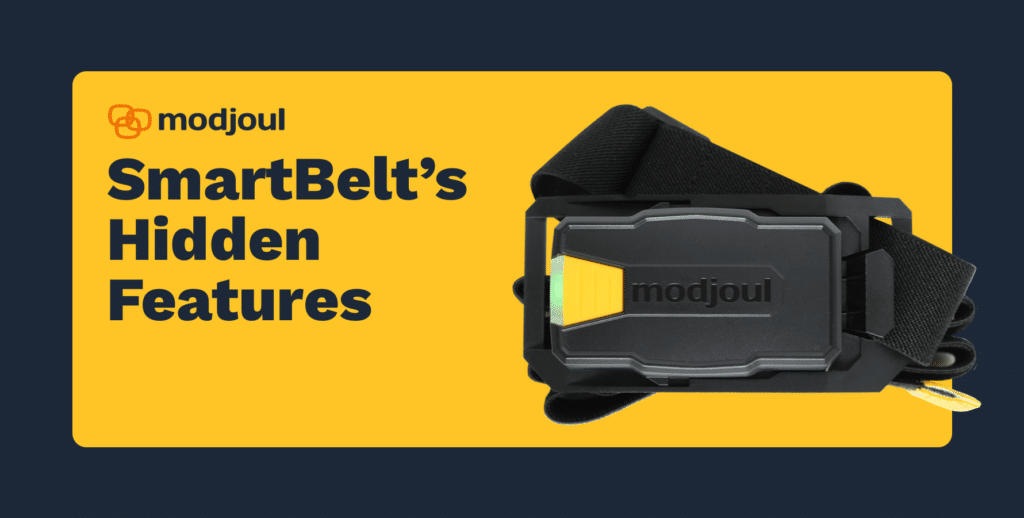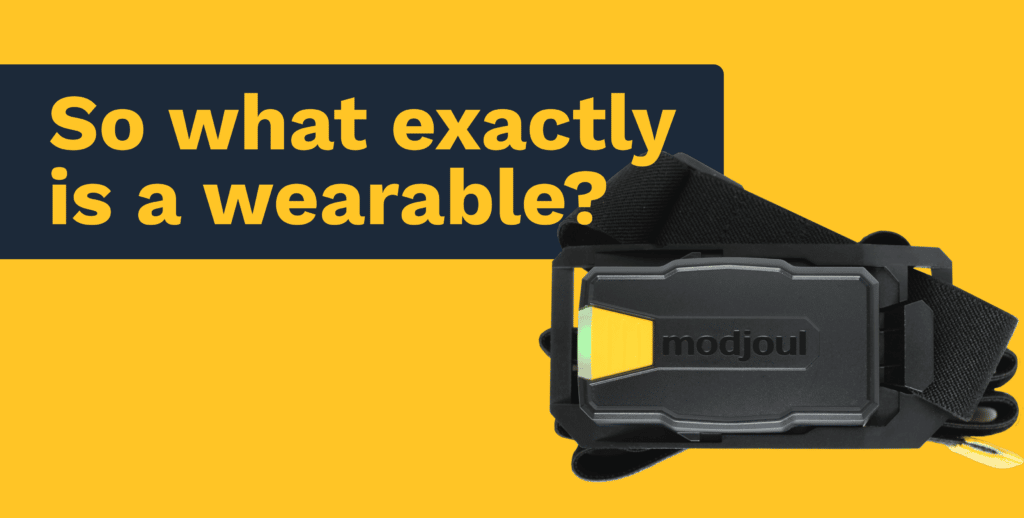While wearable smart devices have become common in everyday life, workplace wearables remain in something of a developing stage. In fact, when we first start talking to a potential new client about Modjoul’s SmartBelt Safety Wearable, there is nearly always some level of confusion about the technology and how it works.
Sometimes there is even confusion about the term “wearable” itself.
But while the most technologically advanced wearable devices seem like something out of The Jetsons, wearables aren’t really a novel concept.
Considered the first wearable, eyeglasses were invented way back in the 13th Century (no, Benjamin Franklin did NOT invent them). The Chinese invented an abacus ring in the 1600s, around the same time the very first wristwatches came on the scene among the European aristocracy. Wearable hearing aids debuted in the late 1800s. And in the 1970s, the first calculator watches — think of them as the abacus ring’s digital grandchildren — hit the market.
Humans have been inventing devices that make us more productive, efficient, informed, and safe with increasing rapidity since. From wireless headsets to digital music players to basic fitness trackers to the most advanced smartwatches on the market, today’s wearables have transformed and reshaped much of how we manage and (literally) navigate our world.

Take the iPhone. Though not a wearable in the truest sense of the word, the story of the iPhone is instructive — and highly relevant to how Modjoul continues to innovate and seek solutions to the challenges our clients face.
The teams at Apple that collectively developed the iPhone had a strongly held belief that mobile phones, digital music players and computers were inevitably going to converge. In that context, their goal was rather simple: develop a solution before anyone else.
When Steve Jobs stood onstage and unveiled the first iPhone to the world in 2007, no one inside or outside Apple predicted it would have the impact on the world it has had. It led directly to the development of an app platform that we all now take for granted. From ordering food to arranging transportation, anything you need or want is at your fingertips.
Similarly, whether it’s the iPod Nano (remember those?) or the Apple Watch Ultra, the story of wearables is one of innovation, and of how each new device usually leads to additional inventions and new applications — some of which could scarcely have been imagined previously.
Which brings us back to Modjoul and the SmartBelt. As we’ve written about before, our founders started Modjoul because they identified a big problem and were passionate about solving it. Our SmartBelt wearable has always provided data that was both actionable and reliable, giving our clients real-time insights that allows them to provide targeted additional training and make ongoing improvements to their environments.
But the SmartBelt our clients use to improve workplace safety today has improved by leaps and bounds from the first one we developed just six years ago.
Some of those advances include:
- Advanced sensors that measure environmental conditions such as extreme temperatures and trigger alerts to protect worker health
- Dynamic allocation, allowing for 2-3 users per device
- Increased processing power that allows for simultaneous calculations & operations, providing more real-time intelligence and better decision-making
- Additional data models to add insights around fatigue and exertion
Today, one of the features we are most excited about further developing is the SmartBelt’s button, which can be programmed to address a range of issues that have long created challenges and risks for all sorts of companies.
Perhaps most immediate is the issue of lone worker safety. While the Modjoul SmartBelt measures worker movements and ergonomics, its integrated button can also be used by lone workers to call for help.
“Maybe Steve Jobs knew what the iPhone would turn into today, but maybe not,” says Modjoul Head of Product Chad Leonard. “Regardless, it didn’t just disrupt the cell phone space, it completely disrupted the Internet of Things space, and it continues to evolve to this day.
“The SmartBelt started as a human ergonomic tool. But it’s starting to completely redefine the operational safety space by addressing additional critical safety issues that can be seen in employees’ daily activities.
“At Modjoul, at our core, we are problem-solvers. And in that sense, our wearable is really a platform for continued innovation. It is more a platform to solve problems.”
Something humans have been doing with wearables for a long, long time.




